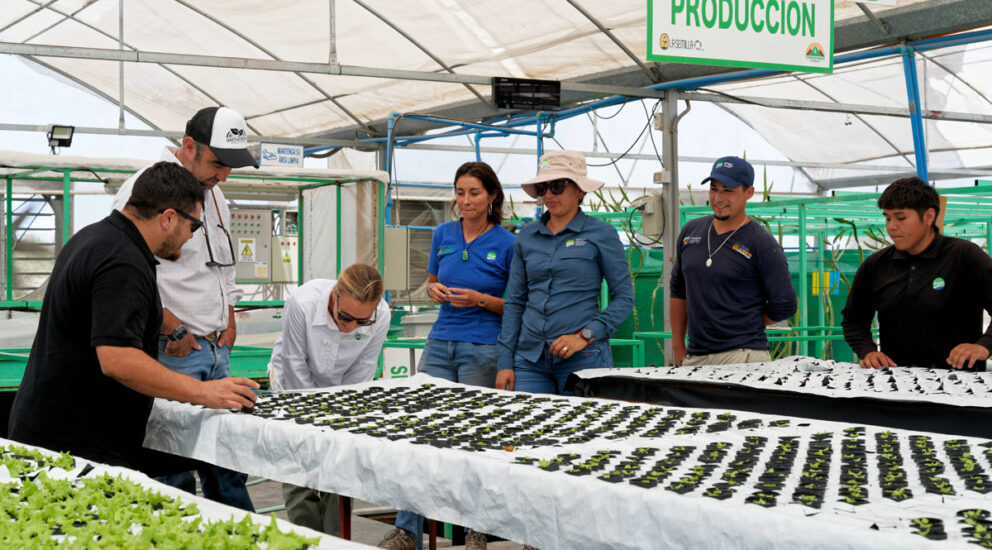
Agriculture in the desert: innovating and protecting the planet
11/Oct/2023
In recent years, SQM has developed several initiatives related to agriculture in areas with extreme weather conditions, building greenhouses and production centers, organizing educational meetings and otherwise strengthening farmers in Chile’s Norte Grande.
From northern Chile, SQM ratifies its commitment to care for the environment through initiatives that help develop a more sustainable industry, focusing on responsible production and consumption of natural resources and the protection of the planet, objectives that are directly related to the 2030 Agenda promoted by the United Nations through its Sustainable Development Goals (SDGs), to which SQM adheres.
Under this premise, SQM has been partnering with the municipality of Pozo Almonte and the La Semilla Foundation for the past four years to build the Agricultural Research and Development Center, located in the town of La Tirana, Tamarugal Province. This facility boasts more than one thousand square meters of infrastructure, including a modern greenhouse, a cheese factory with a production permit and meeting areas and restrooms.
One of its main objectives is to grow hydroponic products using a water resource optimization system and temperature sensors to automatically control the interior climate. It also seeks to promote research and studies to develop agriculture in extreme climatic conditions and to provide tools to diversify the goat milk products and by-products generated by local ranchers.
“This center also has an important educational commitment. Through agreements with universities and high schools in the regions of Antofagasta and Tarapacá, we have conducted several guided tours for new generations to get to know and take an interest in farming in the desert. Likewise, next November we will hold the second version of the Tarapacá Agricultural Innovation and Entrepreneurship Meeting, which brings together more than 300 people involved in agriculture,” said Pablo Pisani, SQM’s Corporate Affairs Manager for Nitrates and Iodine.
This greenhouse model has been replicated on a smaller scale in other locations in the north, such as Caleta Urco, where a group of women farmers are carrying out an attractive hydroponic project with support from SQM and its Atacama Tierra Fértil program.
Prior to this project, the beneficiaries toured the Agricultural Research and Development Center in Pozo Almonte, which taught them more about hydroponic crops in order to improve their current production processes.
Cheese for the world
As for the rest of the facilities, the center recently held a course in the cheese factory on goat milk byproducts, the second such class implemented by INDAP’s Indigenous Territorial Development Program (PDTI), with support from the municipality of Pozo Almonte and SQM.
The 10-day training course, held at the Agricultural Research Center in La Tirana, taught local ranchers a new business model that will strengthen the circular economy of the territory.
“We have conducted this course for the second consecutive year. It is a great source of pride for us as a company, since this is the purpose of this center, to be a hub for building capabilities that in turn boost development within the territory,” commented Pisani.
Solange Villalobos, a beneficiary from the town of Mamiña, highlighted what she had learned, adding that “before I used to bring cheese from the fifth region to sell to my customers, now I will be able to produce my own cheese and sell it even a little cheaper. In this course I learned a lot, such as how to make butter, goat cheese and other products.”
In addition to this work in the district of Pozo Almonte, there are currently various agricultural and livestock initiatives in towns like Bajo Soga, Colonia Pintados, Caleta Urco, San Pedro de Atacama, Toconao, María Elena, among others, whose main objective is to strengthen local economic activity.